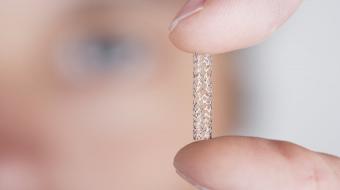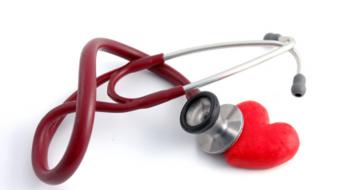Featured Videos
Premier Practitioners
All Videos
Coronary artery bypass grafting (CABG) is a type of surgery for people who have severe coronary heart disease (CHD), which is a buildup of plaque inside the coronary arteries. This plaque can narrow the arteries and reduce the flow of blood to the heart.
Who Needs Coronary Artery Bypass Grafting?
The narrowing of the plaque in the arteries can cause the plaque to crack and then clot, which can lead to a heart attack. Or, the narrowing can be severe enough that whenever you try to exercise you experience chest pain. CABG may be used to:
• Reduce angina symptoms
• Improve heart function after a heart attack
• Lower your risk of heart attack if you have a disease such as diabetes
• Increase your chance of survival
Before the surgery, your physician will perform a physical exam, go over your medical history and ask about any symptoms you have to determine if you’re a good candidate for CABG. Your doctor will recommend further testing to find out which arteries are clogged and how severely they’re clogged. Tests can include:
• Electrocardiogram (EKG), which detects and records the heart's electrical activity
• Echocardiography, which uses sound waves to create a moving picture of the heart
• Coronary angiography, which uses dye and x-ray to show the insides of your coronary arteries
• A stress test, which tests your heart while you exercise
During & After the Coronary Artery Bypass Grafting Procedure
There are several types of coronary artery bypass grafting, including traditional CABG, non-traditional CABG, off-pump CABG and minimally-invasive direct CABG. During the surgery, the cardiothoracic surgeon will connect a healthy artery or vein to the blocked coronary artery or arteries, creating a new path for oxygen-rich blood to flow to the heart.
Following your heart surgery, you’ll probably spend a day or two in the ICU of the hospital. You may need oxygen therapy and a temporary pacemaker to help control abnormal heart rhythms during this time. After you leave the ICU, you may need to spend three to five days in the hospital before going home. It may take you six to twelve weeks to make a full recovery. You’ll also need to make lifestyle changes if you want to prevent further heart problems. This can include eating a healthier diet, quitting smoking and exercising more.
Talk to your cardiologist if you'd like more information on CABG.
Visit HealthChoicesFirst.com for more videos and resources on heart health.
Small vessel disease is a condition in which the walls of the small arteries in the heart are damaged. The condition causes signs and symptoms of heart disease, such as chest pain (angina). Small vessel disease is sometimes called coronary microvascular disease or small vessel heart disease. It's often diagnosed after a doctor finds little or no narrowing in the main arteries of your heart, despite your having symptoms that suggest heart disease.
A cardiologist local is a physician with special training and skill in finding, treating and preventing diseases of the heart like atrial fibrilation cholesterol COPD and blood vessels. Local Cardiologists work with patients to treat conditions including coronary artery heart disease, heart attack, atrial fibrillation and irregular heart rhythm. A cardiologist can help you manage risk through nutrition, exercise and lifestyle changes.





